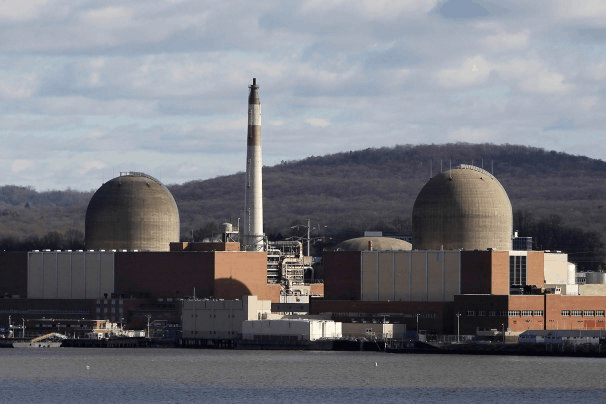
After decades of leaking radiation, Indian Point nuclear power plant, located on the east bank of the Hudson River and approximately 35 miles north of Midtown Manhattan, is finally set to close according to New York Governor Andrew Cuomo. The plant is set to shut down by 2021 due to frequent emergency shutdowns, but there is still a lot of controversy over whether this is the correct decision or not as Indian Point provides over 25% of New York City’s electricity.
Last year, the Indian Point nuclear power plant leaked radioactive material into groundwater near New York City. The plant, owned by the Entergy corporation, has had over 9 “safety events” or “operational events” just in the past year, largely due to the fragility of the plant’s infrastructure and human error. For example, in December 2015 the plant was shut down because large amounts of bird droppings caused an arc between power lines and a transmission tower. Then again, in April 2016, Entergy admitted that it had found damaged bolts holding together the interior of one of Indian Point’s reactors, and in some cases, the bolts were missing altogether. In 2016, Entergy again faced scrutiny after the Guardian published a safety report for proposed natural gas pipelines to be built by energy pipeline company Spectra at Indian Point. The assessment, provided to the Guardian by engineer Paul Blanch, was obtained through the Freedom of information act (FOIA). The analysis was found to be threadbare and hardly accounted for the damage that could result from a potential line breach.
Governor Cuomo has been trying to shut down the 2,083-megawatt nuclear power plant for much of the past 15 years and was unsuccessful until recently. “For 15 years, I have been deeply concerned by the continuing safety violations at Indian Point, especially given its location in the largest and most densely populated metropolitan region in the country,” Cuomo said at a press conference. Yet now, an agreement has been reached between New York State’s government and Entergy Corp. which will finally close Indian Point’s reactors by April 2021. Under the agreement, one of the two nuclear reactors at Indian Point will close permanently by April 2020 and the other one a year later. “I am proud to have secured this agreement with Entergy [plant operator] to responsibly close the facility 14 years ahead of schedule, to protect the safety of all New Yorkers,” said Cuomo.
However, the plant’s closure comes at a price. A major problem in closing the doors of this nuclear plant is the fact that it provides about 25 percent of the electricity for New York City. Assuming the two Indian Point reactors will close in 2020, and another in 2021, how will the city replace the 2,083 megawatts of generation it gets from the power plant? The New York Independent System Operator (NYISO), the nonprofit group managing the state’s electric grid, values the state’s nuclear plants. Last July, in comments to the Public Service Commission on a statement by Cuomo that the state must get 50 percent of its electricity from renewables by 2030 said that “Retaining all existing nuclear generators is critical to the State’s carbon emission reduction requirements as well as maintaining electric system reliability.” The NYISO also stated that meeting the governor’s renewable goal will require the state to triple its onshore wind power capacity. By closing Indian Point, the state will have to rely heavily on wind power which is much less reliable and comes with its own set of unique challenges. However, these challenges pale in comparison to those presented by an aging nuclear facility.
Closing Indian Point will cost New York consumers even more, despite the fact that they are already paying America’s highest electric bills. In 2012, energy economist Jonathan Lesser wrote a report for the Manhattan Institute which estimated that closing Indian Point prematurely will likely mean a $100-per-year increase in average residential bills and a $1000 increase for small business bills. Electric bills for the Metropolitan Transit Authority will likely increase from $1 million to $2 million per year as well, an increase which will ultimately be paid for by taxpayers.
It seems that Indian Point days of leaking radiation are numbered. Four years from now, the city will finally be safe from radiation and this new agreement to close might ultimately save citizens from catastrophes such as the Chernobyl or Fukushima accidents which resulted in 32 deaths, long-term human health effects, and untold environmental devastation. Questions still arise, such as, are citizens ready to pay for this “safety” out of their pockets? And, will the plant’s infrastructure hold before it can be shut down? Though New Yorkers may rest easier knowing that the plant will soon be closed, they aren’t out of harm’s way quite yet.
What are your thoughts? Please comment below and share this news!
This article (Hazardous NY Nuclear Power Plant To Close By 2021) is free and open source. You have permission to republish this article under a Creative Commons license with attribution to the author and True Activist.


